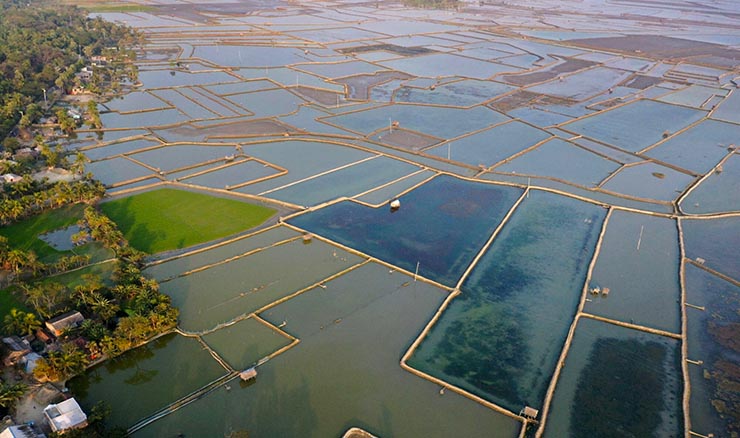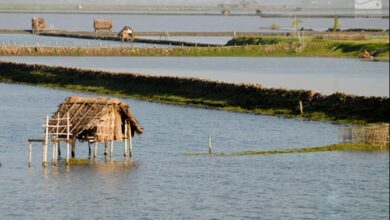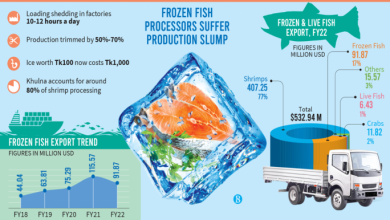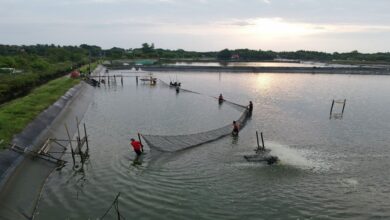
The southwest coast of the country features a distinct brackish water ecosystem. This area is well known as one of the most excellent shrimp farming zones in Bangladesh. As the expenses of shrimp farming are relatively low here, it has become a popular aquaculture practice.
Shrimp farming became popular in Bangladesh quickly with the financial gain from it, however this practice is still unplanned and unregulated. Efforts to regulate its rapid expansion have been futile due to the mentality of quick gain from shrimp farming, lack of proper planning and cooperation among authorized entities.
Though shrimp farming is lucrative from Bangladesh’s perspective. It’s now become the livelihood of 80% of the people in the coastal area. But the long-term sustainability of this sector is still in doubt. Because, sustainable shrimp farming must consider environmental preservation, social contribution and economic growth as well. Therefore, the question arises on the sustainability of shrimp farming in Bangladesh.
Degradation of Mangrove Forest
Experts have voiced concerns that the country’s current approach to shrimp farming in the southwest, threatening the Sundarbans. Bangladesh’s Khulna division has an area of mangroves of over 6,017 sq km (2,323 sq mi). However, some 45% of Bangladesh’s mangrove wetlands have been destroyed as a direct result of industrial shrimp farming, resulting in a loss of biodiversity and the eradication of a source of income for millions of people.
It has been observed that between 1989 and 2010, the amount of forest cover fell by 5%. At the same time, the area of shrimp farms expanded from 22,000 to 276,000 hectares. Furthermore, shrimp aquaculture has entirely ruined the Chokoria Sundarban on the eastern shore of the Bay of Bengal.
Water pollution
Antibiotics, pesticides and other chemicals are overused in shrimp farming in an effort to increase the output. When antibiotics are administered correctly, they can be extremely useful. Unfortunately, many rural farmers are unaware of the type, optimum dosage, and toxicity of the agricultural chemicals they employ. Hence, they speculate that they will experience a benefit and their antibiotic usage cannot be easily identified.
Moreover, shrimp management has become increasingly complex over time as acquiring information is difficult due to farm owners’ secrecy surrounding the usage of these chemicals. The coastal areas of Bangladesh utilise roughly 4520 tons of pesticides for aquaculture purposes. Nearly 25% (1130 tons) of the residue from these pesticides may end up in the neighboring water supply. Experts say that the unplanned use of pesticides is to blame for the disappearance of many native fish from local markets.
Salinity intrusion
Shrimp farming contributes to an increase in salinity by creating canals and flooding former rice fields with salty water (generally known as gher). Recent research by Khulna University found that 25%-30% percent of the country’s arable land are located in 21 coastal regions, of which 53% have been suffering from salinity. The research found that salinity damaged around 75% of land in Satkhira, 66% of land in Bagerhat, 32% of land in Khulna, and 72% of land in Barguna mostly because of shrimp farming.
As saline water is funneled through nearby land, this impacts not just the salinity of the farm soil alone but also that of its surroundings. As soil fertility drops, rice, vegetable, and other crop yields also decline. According to IPCC’s 2007 study, Bangladesh might lose 10% of its rice output by 2050 and 30% of its wheat production by the same year due to the effects of saltwater intrusion.
The heavy intrusion of saline water has also led to the scarcity of freshwater. It’s becoming increasingly difficult for those living along the coast to find reliable sources of freshwater.
Erosion of land
As mangroves area drops every year, the land along the coast is no longer as stable as it used to be. Without the tangled roots of the mangroves to hold the land together, the land washed off into the sea. The degradation of land has affected both employment and food security. Among the numerous benefits that the Sundarbans mangrove forest offers is the opportunity to make a living. As the land has shrunk over the years, less employment has been created, forcing locals to go elsewhere for work.
The relentless pursuit of profit has compromised the sustainability of shrimp farming in Bangladesh. The unplanned farming has resulted in environmental exploitation, decreased cultivation area, fewer livestock production, a risk to human health and destruction of mangrove forest.
Bangladesh govt policymakers, different trade bodies and many NGOs are working on this issue for a long time now. But it’s the demand of time to implement well planned strategy by all parties together and introduce advanced technology in shrimp farming in Bangladesh. Less farming area in controlled environment and optimized output, if this can be ensured; it sure will be a milestone for the sustainable shrimp farming in Bangladesh.
Jaber Bin Abdul Bari
Dept. of Fisheries and Marine Science, NSTU




